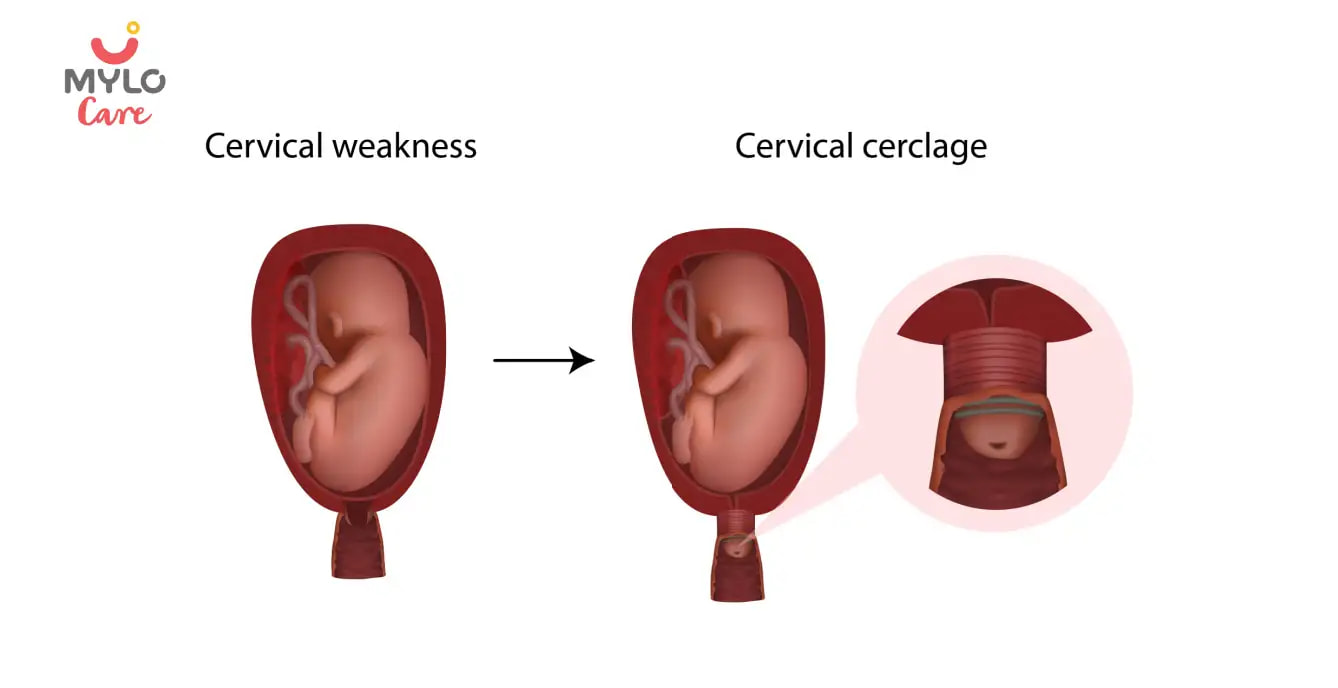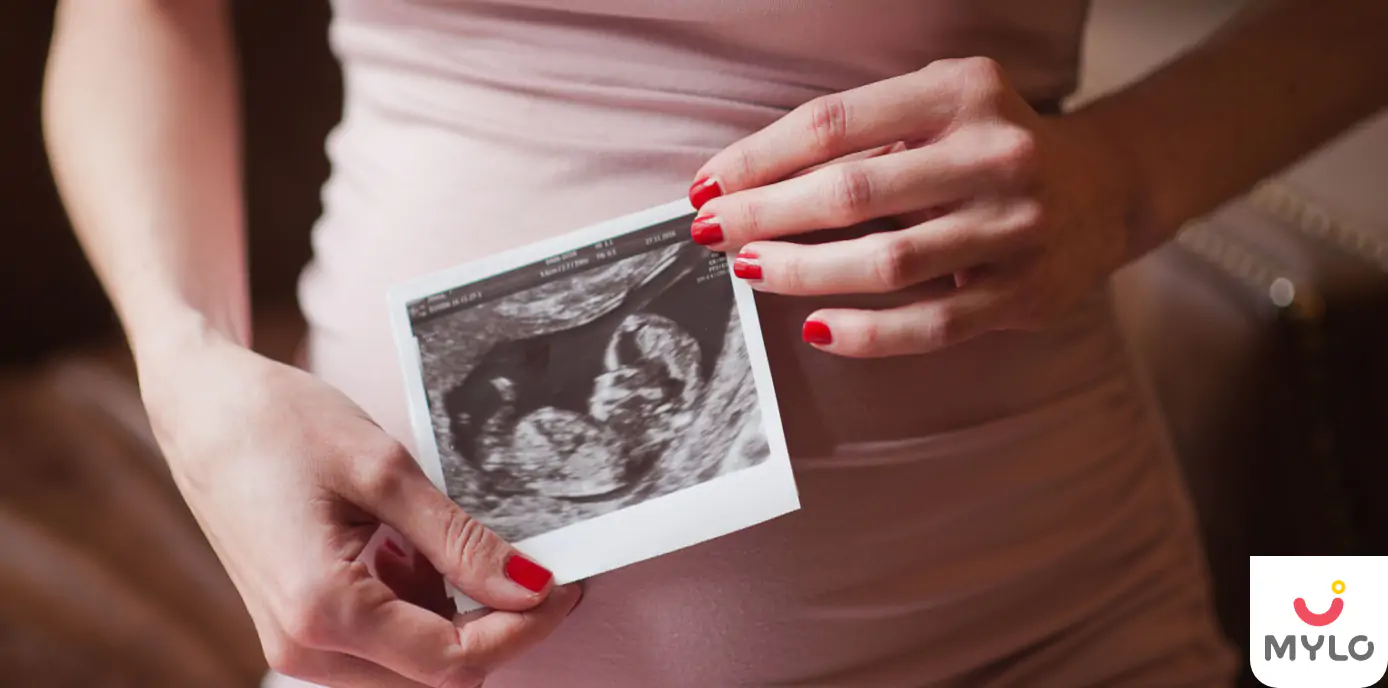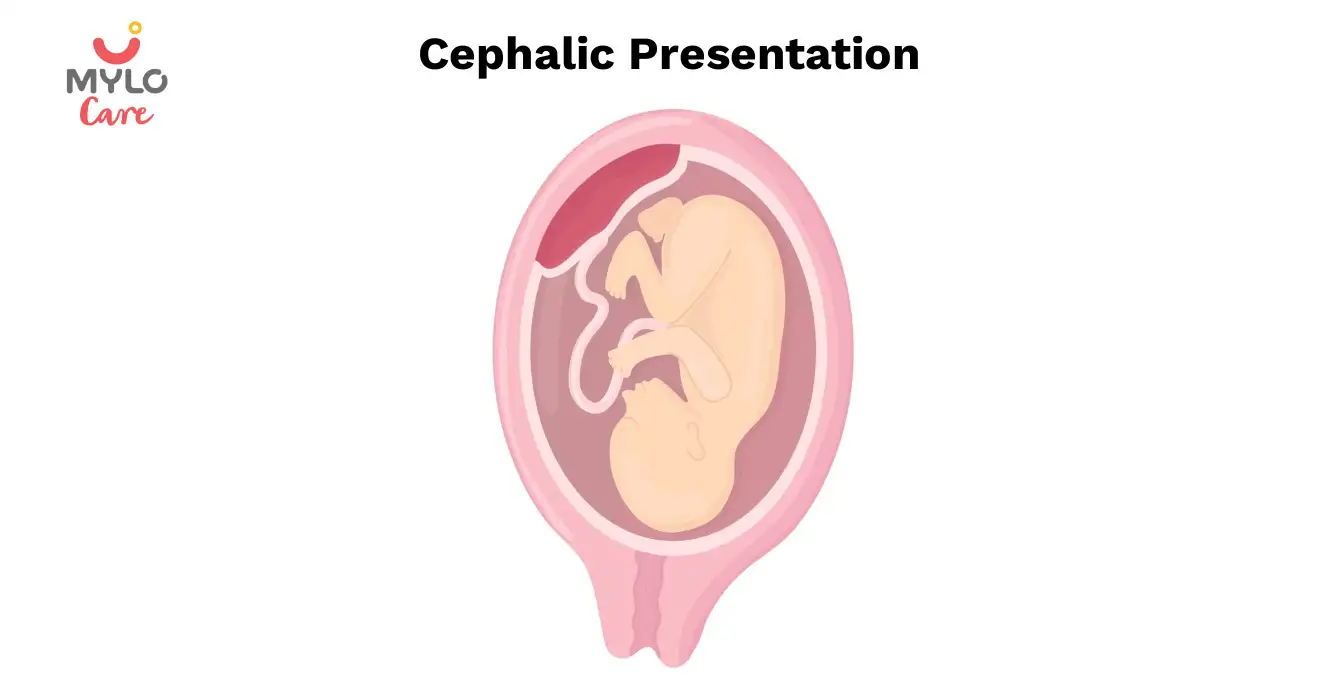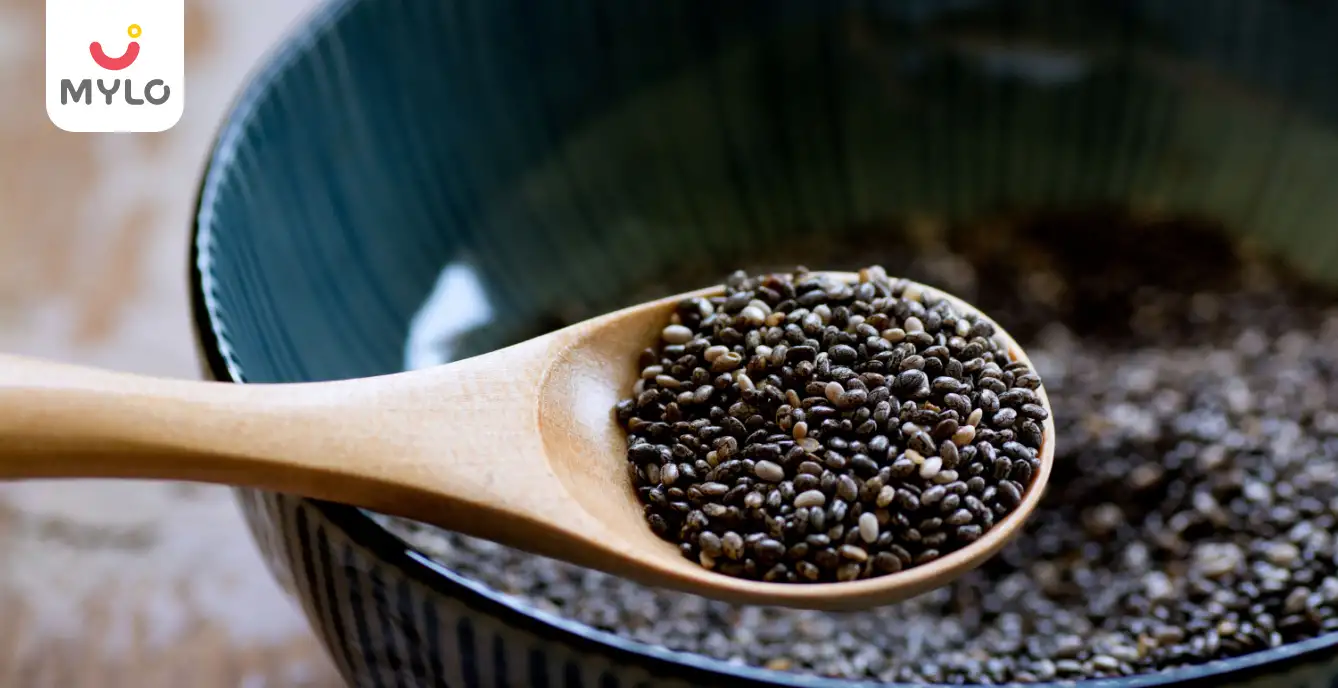Home

Premature Delivery

Cervical Cerclage: A Closer Look at the Procedure and Its Benefits
In this Article

Premature Delivery
Cervical Cerclage: A Closer Look at the Procedure and Its Benefits
Updated on 30 November 2023
Pregnancy is a time filled with joy, anticipation, and sometimes, concerns. While all women hope for a smooth and uncomplicated pregnancy, some women may face challenges that they may not be prepared for. Having a weak or incompetent cervix is one such complication that women may come across during pregnancy. Cervical cerclage is a surgical procedure designed to help prevent premature birth in women who may be at risk due to an incompetent or weak cervix.
In this article, we will understand the intricacies of this procedure, its benefits, and potential cervical cerclage complications. We will address any concerns you may have and provide you with the knowledge to approach this procedure with confidence and peace of mind.
Cervical Cerclage Meaning
The cervix is the narrow passage at the lower end of the uterus that opens during childbirth to allow the baby to pass through the birth canal. An incompetent cervix might begin to dilate or open prematurely, increasing the risk of early delivery or miscarriage.
Cervical cerclage, often referred to as a cervical stitch, involves stitching or placing a suture around the cervix to provide additional support and prevent it from opening too soon.
Step-by-Step Explanation of Cervical Cerclage Procedure
The cervical cerclage procedure steps typically include the following:
1. Preparation
The procedure begins with the patient being positioned on the surgical table, usually in a lithotomy position (lying on the back with knees bent and feet placed in stirrups).
Anesthesia, either regional or general, is administered to ensure the patient's comfort during the surgery.
2. Examination and Access
The healthcare provider conducts a thorough examination of the cervix, often using a speculum to visualize the area.
The vaginal area and cervix are cleaned and sterilized to minimize the risk of infection.
3. Placing the Stitch
Using specialized instruments, the surgeon carefully grasps the cervix to gain access and control.
Depending on the specific technique chosen (e.g., McDonald or Shirodkar), the surgeon uses sutures or stitches to encircle or secure the cervix.
The aim is to reinforce and support the cervix, preventing it from dilating prematurely and potentially causing a miscarriage or preterm birth.
4. Closing and Monitoring
Once the stitch or stitches are in place, the surgeon secures them and ensures proper tension to support the cervix without causing undue pressure.
The procedure is completed by tying off the sutures and trimming any excess material.
Post-procedure, the patient is monitored for a brief period to observe any immediate complications or adverse reactions.
5. Post-Procedure Care
Patients may be advised to refrain from strenuous activities and sexual intercourse for a specified period following the procedure to allow proper healing.
Antibiotics or other medications may be prescribed to prevent infection or manage discomfort.
6. Follow-Up
Regular follow-up appointments are scheduled to monitor the cervix's condition throughout the remainder of the pregnancy.
In some cases, the cerclage stitch might be removed before the expected due date, typically around the 37th week of pregnancy, or as advised by the healthcare provider.
You may also like: Dilation and Curettage (D&C): Procedure, Risks & Benefits
What are the Benefits of Cervical Cerclage?
Here are the key advantages of a cervical cerclage procedure:
1. Reduced Risk of Premature Birth
Cervical stitch helps lower the chances of preterm labor and premature birth, supporting the pregnancy to reach full term.
2. Lowered Risk of Miscarriage
For women with a history of miscarriages due to an incompetent cervix, cerclage significantly reduces the risk, enhancing the chances of a successful pregnancy.
3. Increased Chance of Carrying Pregnancy to Full Term
By providing structural support to the cervix, cerclage improves the likelihood of carrying the baby to the optimal gestational age, promoting better fetal development.
4. Preservation of Pregnancy
Cerclage aids in preserving the pregnancy by reinforcing the weakened cervix, minimizing the risk of its premature opening.
5. Potential for Vaginal Delivery
In some cases, cervical stitch enables women to opt for a vaginal delivery instead of a cesarean section, depending on individual circumstances and the success of the procedure.
6. Emotional Well-being
The procedure can alleviate anxiety and emotional stress associated with the fear of premature labor or miscarriage, promoting a more positive pregnancy experience.
7. Enhanced Pregnancy Outcomes
Overall, cervical cerclage contributes to improved outcomes for both the mother and the baby, ensuring a healthier and safer pregnancy journey.
What are Some Potential Cervical Cerclage Complications?
While cervical cerclage procedure is generally considered safe, there are potential risks and complications associated with the procedure:
1. Infection
There is a risk of infection at the site of the cerclage. This can lead to symptoms such as increased vaginal discharge, pain, or fever. Prompt medical attention and antibiotics are usually effective in managing these infections.
2. Bleeding
Some women may experience mild bleeding after the procedure. While this is typically normal, excessive or persistent bleeding should be reported to a healthcare provider for evaluation.
3. Preterm Premature Rupture of Membranes (PPROM)
In rare cases, the amniotic sac surrounding the baby may rupture prematurely after cerclage, resulting in the leaking of amniotic fluid. This could potentially lead to early labor and requires immediate medical attention.
4. Cervical Laceration
During the cerclage placement, there is a slight risk of minor tears or lacerations to the cervix. These usually heal without significant complications but may cause discomfort or mild bleeding.
5. Cervical Incompetence
Despite the cerclage procedure, there is a possibility that the cervix may still dilate prematurely, leading to complications such as preterm labor or miscarriage. Regular monitoring and follow-ups with healthcare providers are essential to detect any signs of cervical incompetence.
You may also like : Myths and Facts: Can Heat Inducing Food Cause Miscarriage?
Final Thoughts
Cervical cerclage is a valuable intervention that offers substantial benefits for women at risk of premature labor or miscarriage due to an incompetent cervix. While it presents advantages in improving pregnancy outcomes, it's crucial to consider potential complications and discuss them thoroughly with healthcare providers before opting for this procedure.
References
1. Bieber KB, Olson SM. (2023). Cervical Cerclage. In: StatPearls [Internet]. Treasure Island (FL): StatPearls Publishing
2. Shennan A, Story L, Jacobsson B, Grobman WA. (2021). FIGO Working Group for Preterm Birth. FIGO good practice recommendations on cervical cerclage for prevention of preterm birth. Int J Gynaecol Obstet.



Written by
Anupama Chadha
Anupama Chadha, born and raised in Delhi is a content writer who has written extensively for industries such as HR, Healthcare, Finance, Retail and Tech.
Read MoreGet baby's diet chart, and growth tips

Related Articles
Related Questions
Hello frnds..still no pain...doctor said head fix nhi hua hai..bt vagina me pain hai aur back pain bhi... anyone having same issues??

Kon kon c chije aisi hai jo pregnancy mei gas acidity jalan karti hain... Koi btayega plz bcz mujhe aksar khane ke baad hi samagh aata hai ki is chij se gas acidity jalan ho gyi hai. Please share your knowledge

I am 13 week pregnancy. Anyone having Storione-xt tablet. It better to have morning or night ???

Hlo to be moms....i hv a query...in my 9.5 wk i feel body joint pain like in ankle, knee, wrist, shoulder, toes....pain intensity is high...i cnt sleep....what should i do pls help....cn i cosult my doc.

Influenza and boostrix injection kisiko laga hai kya 8 month pregnancy me and q lagta hai ye plz reply me

Related Topics
RECENTLY PUBLISHED ARTICLES
our most recent articles

Stories
The Ultimate Guide to Panchatantra Stories for Kids

Labour & Delivery
Which Is Better Normal Or Cesarean Delivery

Fetal Growth
How to Get Baby in Right Position for Birth?

Fun & Humour
Paheliyan 101: Riddles for Kids That Educate and Entertain

Fetal Growth
The ABCs of Cephalic Presentation: A Comprehensive Guide for Moms-to-Be

Diet & Nutrition
The Ultimate Guide to Consuming Chia Seeds in Pregnancy
- Essential Tips for Normal Delivery After Cesarean
- Crab During Pregnancy: Benefits, Risks and Smart Choices
- Normal Delivery Tips: An Expecting Mother's Guide to a Smooth Childbirth Experience
- Top 10 Panchatantra Stories in English You Must Read to Your Children
- What Helps in Improving Mental Health of Women
- Childhood Disorders: Meaning, Symptoms & Treatment
- Bleeding During Pregnancy 8 Weeks: Should You See a Doctor?
- The Ultimate Guide to Having Sex After C Section
- The Ultimate Guide to Baby Brain Development Food During Pregnancy
- Nappy Rash: Your Ultimate Guide to Symptoms and Quick Relief
- How to Get Periods Immediately to Avoid Pregnancy?
- Loss of Appetite During Pregnancy: Causes and Solutions
- How to Increase Newborn Baby Weight: Expert Tips and Tricks
- Fertisure M: The Comprehensive Solution to Male Infertility and Reproductive Health


AWARDS AND RECOGNITION

Mylo wins Forbes D2C Disruptor award

Mylo wins The Economic Times Promising Brands 2022
AS SEEN IN
















- Mylo Care: Effective and science-backed personal care and wellness solutions for a joyful you.
- Mylo Baby: Science-backed, gentle and effective personal care & hygiene range for your little one.
- Mylo Community: Trusted and empathetic community of 10mn+ parents and experts.
Product Categories
baby carrier | baby soap | baby wipes | stretch marks cream | baby cream | baby shampoo | baby massage oil | baby hair oil | stretch marks oil | baby body wash | baby powder | baby lotion | diaper rash cream | newborn diapers | teether | baby kajal | baby diapers | cloth diapers |








